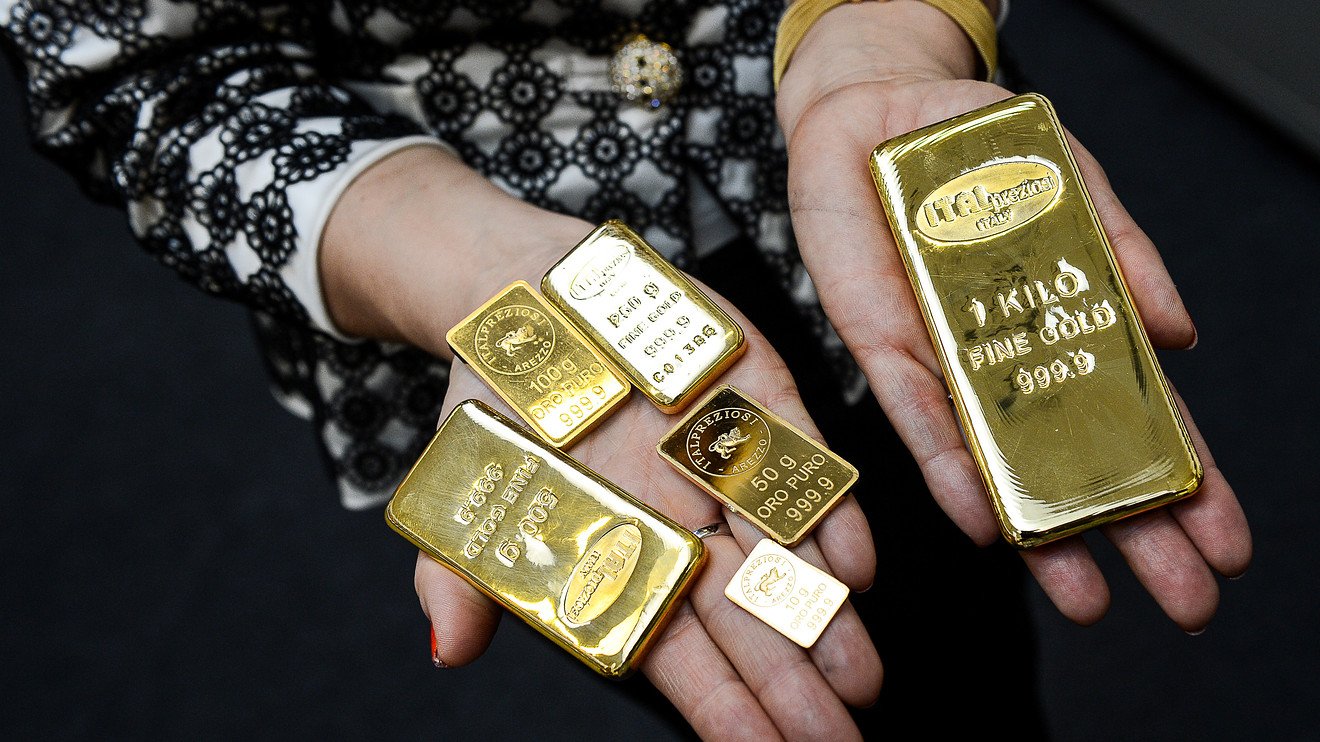Gold Falls on Robust US Jobs Data but Remains Ahead of Key Fed Meeting
Gold prices fell for a second consecutive day after a better-than-expected US May Nonfarm Payrolls (NFP) data sapped optimism for an immediate Federal Reserve rate cut and strengthened the US Dollar and Treasury yields. Even though it dropped 0.84% on Friday to $3,322, XAU/USD is poised to end the week with gains of more than 1.30%, underpinned by geopolitical tensions and central bank buying. Traders are now looking forward to next week’s inflation data releases and the Fed policy meeting soon, as the market re-adjusts for monetary easing further down the line in 2025. KEY LOOKOUTS • The strong NFP data lowers expectations for near-term rate reductions, with markets now pricing fewer than two cuts by the end of 2025. • XAU/USD needs to stay above the key $3,300 support or risk further losses down to $3,250 or lower. • Next week’s CPI, PPI, and University of Michigan Consumer Sentiment could continue to drive market sentiment and Fed policy expectations. • Tensions between Ukraine and the Middle East, and constant central bank gold buying, continue to offer a positive environment for Gold. Gold prices declined on Friday after a better-than-expected US jobs report strengthened the US Dollar and Treasury yields and lowered chances of near-term interest rate cuts by the Federal Reserve. Even after the day’s loss, XAU/USD is still up more than 1.30% for the week, buoyed by persistent geopolitical tensions and consistent central bank buying. The market is now setting its sights on pivotal US inflation data releases later next week, which may further influence expectations leading up to the Fed’s June 17–18 meeting. Staying above the $3,300 support level is still vital for Gold to continue its bullish configuration in the near term. Gold declined following robust US jobs data reduced expectations for a Fed rate cut, pushing the Dollar and yields higher. Gold maintains weekly gains above 1.30% despite the decline, underpinned by central bank purchases and geopolitical tensions. • Gold (XAU/USD) declined by 0.84% on Friday, trading around $3,322 following robust US NFP data. • The US created 139K jobs in May, topping estimates and maintaining the unemployment level at 4.2%. • Hawkish data prompted traders to trim back Fed rate cut expectations, boosting the US Dollar and Treasury yields. • Gold is poised to end the week with gains of more than 1.30% despite losses on each day of the current week. • Key support for XAU/USD at $3,300 holds; a break here could see $3,250 or lower. • Market attention turns to next week’s US CPI, PPI, and consumer sentiment releases. • Long-term bullish sentiment is supported by ongoing geopolitics risks and central bank gold purchases. Gold was strong this week despite being challenged by a stronger-than-forecast US Nonfarm Payrolls for May. The on-going strength in the labor market, with 139K new jobs added and unemployment remaining at 4.2%, supported the view that the US economy is still strong. This information changed market expectations surrounding Federal Reserve interest rate trajectory, prompting investors to reduce rate reduction bets in the short term. This caused the US Dollar and Treasury yields to rise, which temporarily weakened Gold prices. XAU/USD DAILY PRICE CHART CHART SOURCE: TradingView Nonetheless, wider macroeconomic and geopolitical forces underpin the appeal of Gold as a safe-haven asset. Escalating tensions in Eastern Europe and the Middle East and persistent uncertainty among global financial markets have sustained demand for bullion. Further, central banks continue to buy Gold to diversify away from US Dollar reserves. These structural forces might still underpin the long-term value of Gold irrespective of short-term volatility in economic fundamentals or market sentiment. TECHNICAL ANALYSIS Gold (XAU/USD) is in an extended bull trend despite recent retreats. The price is consolidating above the support level of $3,300, which is a pivotal base for continued upward momentum. A breakout and hold above this level may set the stage for a retest of the high of late at $3,403, with additional upside to the $3,450 level and all-time high of $3,500. However, if XAU/USD breaches below $3,300, it could trigger a deeper correction toward the 50-day Simple Moving Average around $3,235. The Relative Strength Index (RSI) has turned slightly bearish, suggesting a possible continuation of short-term weakness before any rebound. FORECAST If Gold holds resistance above the $3,300 level, bullish interest may resume, which could propel XAU/USD back towards the recent high of $3,403. A breach above that level could attract additional buying, taking prices up to the $3,450 resistance zone. If bullish sentiment gains strength, particularly against a backdrop of geopolitical tensions or low inflation readings, Gold may even test its record high near $3,500 in the sessions ahead. On the other hand, a firm break below the $3,300 support would activate a steeper correction. In that case, Gold can go down towards the 50-day Simple Moving Average around $3,235, followed by the next major support area around $3,167, which was the high of early April. Strength in the US Dollar and increasing yields can provide additional pressure on the downside, especially if coming inflation data supports a hawkish Fed outlook.












